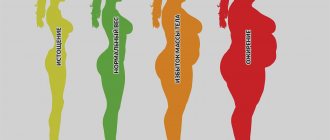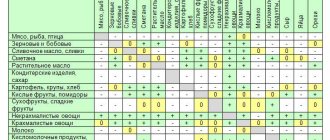From this article you will learn how much time it will actually take to lose weight by 10, 15, 20, 30 kg (underline as appropriate), and most importantly, the result will remain with you forever. You can lose 10 kg in a week with the help of extreme water cutting, but such weight loss will be unhealthy, and the result will be short-lived.
The body, by and large, doesn’t care about your plans to lose weight. He is very adaptive and tries to adapt to any changes in diet and lifestyle in order to maintain his energy reserves. This means that he will resist losing weight in order to protect himself and survive.
In this article we will try to calculate the duration of the diet that is closest to reality, taking into account the body’s adaptation during weight loss. The method is based on the practical experience of Lyle MacDonald, a great specialist in the field of nutrition and physiology.
The obtained figures are very sobering and bring expectations of quick results back to earth. However, they will be useful in setting you up for a long but enjoyable journey of changing your body.
What are calories and kilocalories
A calorie is a unit of measurement for the amount of energy contained in food. That is, the amount of energy that enters our body when the product we consume is broken down.
The difference between the concepts of calorie and kilocalorie is quantitative. 1 kilocalorie = 1000 calories.
Many people, including food manufacturers and athletes, are confused about these concepts - calories may be indicated on one package, and kilocalories on another. But the method of calculation in these cases remains the same.
The kilocalorie has its equivalent in the metric system of measurements - kilojoule. All that is worth remembering about it is that 1 kJ = 4.2 calories.
Calorie counting apps for weight loss
Application developers offer consumers special applications for calculating KBZHU for any smartphone system. The principle of operation is almost identical everywhere and helps the user set up their diet for weight loss. Each of them has its own unique features. Here is the TOP5 selection of the most popular applications from our editors:
FatSecret - the program efficiently calculates nutritional values and calories, tracks achievements and teaches you how to create a balanced diet.
Yazio is a convenient calorie calculator that analyzes information about foods consumed and physical activity for the month.
MyFitnessPal is a high-quality development that is popular all over the world. The service is considered the best calorie counter for Android.
Diary Nutrition is a free nutrition diary with a simple interface.
What is the role of calories in the body?
Calories allow us to survive. All processes occurring in the body (breathing, the work of the heart to pump blood, tissue repair, digestion, etc.) require energy, which calories give us when breaking down food. In simple terms, a lack of calories is a lack of nutrition, and absolutely everyone understands that a person cannot survive without food. At first, you won’t even have the strength to move, and after using up the calorie reserves in your body (the proportion of fat), it will have no resources left to perform vital functions. Therefore, it is very important to correctly calculate the number of calories for weight loss per day so as not to go into a large deficit.
In addition, the number of calories received and spent shapes our figure. Therefore, it is very important to calculate calories by weight. If the consumption is higher, then you will lose weight, if on the contrary, then you will gain weight, and if these indicators are the same, then you will remain in your current shape.
How quickly you can lose weight or weight loss strategy
Real weight loss looks non-linear:
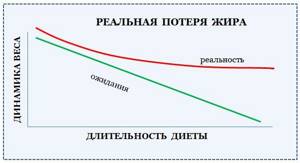
This is due to the fact that the body adapts to the changes that occur during the diet:
- Your weight decreases, which means you need less energy for basal metabolism (read more about the effect of energy balance on body weight);
- Since you eat less, the thermic effect of food (calories spent on digestion) decreases;
- Your expenses for training activity are reduced, because... the body weighs less and fewer calories are needed to carry out any work;
- It is possible that expenses for household needs will decrease - when there is little energy from food, we are less willing to do something, we get tired faster, etc.
To respond to the body's adaptation to the diet, correction of the deficiency is necessary. I talked about it in detail in this article. Read and implement.
But even with deficit correction, we need complete breaks during the diet:
- For psychological relief. By dividing your diet into small stages, you are less likely to lose control or give up the idea of losing weight altogether.
- To adapt the body to a new weight and diet. The biggest impact of a diet break is to reset the hormonal system (leptin, insulin, thyroid hormones and others), which constantly signals the brain to slow down the rate of fat burning.
A full break means we are on maintenance calories or ±10% of that number. The rest of the BJU numbers will remain the same as on a healthy diet (about 2 g of protein and 1 g of fat per 1 kg of weight and at least 100 g of carbohydrates per day).
The smoother the changes, the greater the chances of success and maintaining the results of the diet forever.
Marathons, crazy drying, and weight loss only work for a short time. You will get results from draining water from the body in case of extreme rates of weight loss (for example, before a competition or a significant event). For other cases, if a calorie-restricted diet is a burden to you, then after the end of the diet you will return to your usual diet, and as a result, the weight will return.
Therefore, we lose weight slowly, take breaks, consolidate the result, and at the same time build a diet that we can stick to constantly (all our lives) and feel comfortable . And if necessary, it is easy to adjust it to suit our goals (weight gain, maintenance or weight loss).
Again:
During a diet, you need to develop a diet that you can stick to for the rest of your life.
It is very difficult to lose weight and stay with the results if you adhere to a strict diet (unnecessary restrictions, exclusion of certain foods, etc.) and do not give your body a break.
In general, I have a wonderful article about nutrition - how to build a diet for weight loss without denying yourself anything.
Therefore, the weight loss strategy that Lyle McDonald suggests is to gradually reduce the percentage of fat by 5% in one cycle with a complete break in the diet for 4-8 weeks after that.
For example, we start losing weight with 30% body fat. We lost up to 25% of weight and took a complete break for 4-8 weeks. Then we lose weight to 20% fat and again take a break of 4-8 weeks. We start the next cycle with 20%, etc.
During a complete break, weight may increase and this is normal. The increase will mainly be due to an increase in carbohydrates in the diet - glycogen and water. They will easily move into the next cycle (two steps forward, one step back). It will be great if during this period the emphasis is on gaining muscle mass. This will also help you burn fat better in the future.
How to calculate your daily calorie intake
You need to calculate the number of calories per day for weight loss strictly individually. This number is influenced by many factors, and you should not rely on the results of friends, acquaintances or such a well-known norm as 1200 calories, which, despite its popularity, is not correct. This is the lower threshold that a woman needs for the normal functioning of the body, that is, this amount of energy is only enough for the functioning of the organs. But if your lifestyle is quite active, then consuming 1200 calories a day will cause enormous stress to the body, and it will begin to store fat, that is, store it from all foods, even dietary ones. To prevent this, you can independently use the formula for calculating kcal for weight loss. Or an application or website can help you determine your daily calorie intake, where you first enter complete information about yourself (gender, age, height, weight, daily activity, presence or absence of amputations, etc.).

How to choose the appropriate coefficient?
If you work in a mine or cut down wood, then you need to choose the maximum coefficient. If the activity you are engaged in is associated with an average level of physical activity, for example, you are caring for cattle, you should use coefficients of 1.55. Such recommendations were given by the authors of the formula at the beginning of the last century. Naturally, modern professions that require long periods of work at a computer are not on the list.
Therefore, when you enter your gender and age into a computer on a simulator or into a fitness bracelet, you cannot assume which coefficient the device will choose to calculate your daily calorie intake. You may be lucky and the coefficient will be in the range from 1.4 to 1.7, that is, the error will not exceed 20%, or 500 kilocalories.
Formulas for calculating daily calorie needs
There are two most popular formulas: Harris-Benedict and Mifflin-San Jeor. The first formula was published in 1919, the latest is newer (published in the late 90s).
They use the same indicators, but make different calculations.
Since the first formula is far from new, its calculations may not be entirely correct; after all, the lifestyle of people who lived a century ago was noticeably different from the current lifestyle of people living in cities. The results of the calculation using this formula are slightly higher than the norm for a modern person, but if you are active enough, then this is not scary. Moreover, when people use sites, they do not think about what formula is used to calculate them, but nevertheless they achieve good results.
The second formula is newer and improved taking into account the current activity of people, which is now several times less than 100 years ago, and the products, due to preservatives, are more nutritious.
Calculation of basic calorie intake
This is an indicator that shows how much energy your body spends on its vital functions: breathing, digestion, heart function, sleep, internal organ function, hormonal levels, etc.
Basal calorie expenditure is a measure of your metabolic rate without taking into account your activity level. This is where the norm of 1200 kilocalories for women and 1800 for men comes from, since on average this is how much energy the body of different sexes spends. But this is an average, not an individual figure.
It is not recommended to consume calories below this figure, as this will cause significant harm to health and the body will not have enough resources to maintain its vital functions. Plus, the body will begin to store energy, that is, store fat. This will lead to you gaining weight even with a constant feeling of hunger.
Daily calorie intake for men
The average daily calorie intake for men from 18 to 45 years old ranges from 2800 to 3050 kcal. After 45 years, the metabolic rate decreases and the body needs less energy to function. If the average is not enough for you, then you need to use special formulas and calculate your personal norm.
Harris-Benedict formula
BMR = 66 + [13.7 x weight (kg)] + [5 x height (cm)] - [6.76 x age (years)].
BMR is an indicator of basal metabolism, that is, the amount of energy consuming which you will not gain weight or lose weight.
You need to multiply the result obtained by the activity coefficient, but you need to evaluate it adequately.

How to calculate your daily calorie intake for weight loss: you need to subtract 10-15% from the result obtained to create a calorie deficit. If your goal is to gain weight, then you need to add 15-20% to this figure. And if your goal is to maintain your current shape, then consume the resulting number of calories.
Mifflin-San Geor Formula
BMR = [9.99 x weight (kg)] + [6.25 x height (cm)] - [4.92 x age (years)] + 5.
The principle is the same, only the numbers in the calculations are different. Don’t forget to multiply the result by the activity coefficient, then for weight loss subtract 10-15%, for weight gain add 15-20%, if you want to stay in your current shape, then use the basic norm.
Calorie diet for weight loss formula. How many calories do you need to lose weight?
The answer to the question of how many calories you need to lose weight is simple: to lose weight, you need to maintain a deficit in your daily calorie intake. Those. you need to spend more than you consume. Here's how to achieve this: eating less or exercising more is up to everyone. Many people get so carried away that they reduce their calorie intake by an unacceptable amount, which can negatively affect their health. The daily reduction in calorie intake should be no more than 20% - this is the norm for safe weight loss.

You can find out the number of calories needed for weight loss as follows:
- determine how many kcal you can eat per day (using an online calculator or the formulas described below);
- We calculate the required daily caloric deficit, i.e. the number of kcal by which you need to eat less to lose weight.
The average daily intake for women is 2000-2500 kcal, for men – 2400-2900 kcal. To lose weight, you need to ensure that your daily calorie intake is no higher than these values, but not lower than 1500 kcal. Otherwise, you can deal with all sorts of diseases. There is no need to take these indicators as a standard: you need to take into account the individual characteristics of a person, including metabolic rate, level of physical activity, etc.
The required number of calories for a woman to lose weight
A woman needs fewer calories to function normally than a man. This is explained both by differences in the physiological processes occurring in the body and by various physical activities. The average daily calorie requirement is 2200 kcal. For example, a young girl needs to consume more calories than an older woman. As you age, your metabolism slows down, so your body doesn't need as much energy.
Every hour the human body uses one kcal. Accordingly, the permissible norm will be equal to the product of body weight by 24 hours. For example, a woman with a height of 165 cm and a weight of 80 kg needs to consume no more than 1920 kcal daily (80 kg x 24 hours = 1920). This is the only way she can lose weight.
Weight is not the main indicator for calculating calorie intake. Lifestyle must also be taken into account. If a woman does not play sports at all and her work involves constant sitting, then depending on her age, the following calorie intake standards apply:

The table will be slightly different if a woman systematically has light loads:

The norm increases slightly for active women who regularly play sports:

Required number of calories for weight loss for a man
According to generally accepted standards, there is the following gradation of standard calorie intake for men:
- up to 30 years – 2400-2600 kcal per day;
- 30-50 years – 2200 kcal;
To calculate the required number of calories per day, you need to multiply a man’s weight by 20. But this does not take into account physical activity. For every minute of cardio exercise, you need to add 5 kcal to the daily norm; for strength training, this figure will be equal to 10 kcal.

Daily calorie intake for women
Recently, more and more girls are striving for an ideal figure. Perhaps this is largely the influence of social networks - sometimes it begins to seem that you are the only one who doesn’t have pumped up buttocks and a flat stomach. In this regard, many girls began to wonder how to determine their calorie intake per day. Taking care of yourself is a great idea, the main thing is not to go to extremes and not sit on the water with apples, which many girls do.
The average daily caloric intake for women from 18 to 35 years old is 2350-2500 kcal, but for many girls, especially those of short stature and with a little excess weight, this norm is considered too high.
Calories for weight loss are calculated using the same formulas, but with numbers different from the formula for men.
Harris-Benedict formula
BMR = 655 + [9.6 x weight (kg)] + [1.8 x height (cm)] - [4.7 x age (years)].
Mifflin-Saint-Geort formula
BMR = [9.99 x weight (kg)] + [6.25 x height (cm)] - [4.92 x age (years)] -161.
We remind you that BMR is an indicator of basal metabolism, that is, the amount of energy consuming which you will not gain weight or lose weight.
The result obtained must be multiplied by the activity coefficient (see image above), but evaluate it objectively, since your result depends on it.
And again we remind you: in order to calculate the number of calories for weight loss per day, you need to subtract 10-15 percent from the resulting figure to create a calorie deficit, but no more if you want to lose weight efficiently and without health problems. To gain weight, add 15-20% to the result. If you are satisfied with your figure, then simply use the received norm.

Calorie intake for weight loss calculation online. Supercalorizer - online calorie calculator
Using a free calorie calculator, you can create a menu of a certain calorie content or calculate the energy value of your breakfast, lunch and dinner for free and without registration. The calculator is a giant database of food products and works like a street coffee machine: you simply select the desired product or ready-made dish, indicate its weight and add it to your menu.
The menu is displayed directly below the site logo and shows the total number of kilocalories (kcal) in the selected products, as well as the calculation of their protein, fat and carbohydrate content. You can print it or save a quick link that allows you to share the menu with other people or return to it in the future.
First of all, the calculator will be useful for people who want to monitor their diet and count calories in order to lose excess weight and maintain normal body weight in the future. Controlling your caloric intake is one of the most effective ways to lose weight. This online counter will make this process convenient and fast. The advantage of the calculator is that there is no need to use special kitchen scales and weigh each product separately.
Also, the calorie calculator will be useful for athletes, bodybuilders and fitness enthusiasts who want to control the amount of proteins, fats and carbohydrates in their menu. For example, to build muscle mass, you can create a protein diet menu using this site. And for the so-called “drying” (the process of rapid weight loss), you can create a menu low in carbohydrates.
By the way, this site can also be used for purely reference purposes. Essentially, this is an online table of calorie content of foods divided into categories. If you don’t need to create a menu, but just need to find out how many calories are in a particular product, then we recommend using a quick search in the product database at the very top.
How to count calories: step-by-step instructions.
Step 1: Find the product you need.
If you have already selected a product, simply enter its name into the quick search found at the top of each page. In the drop-down hint, the system will offer you all available options. Click on the one you need.
If you haven't decided yet and just want to choose a product, go to the category you are interested in and just click on it.
Step 2. Specify the mass and add to the menu.
After clicking on the product, a pop-up window will open in which you need to select the desired mass (i.e. how much you are going to consume in grams) and click “Add”.
The added product will automatically move to the summary menu located at the top of the page (right below the site name)
Step 3: Print the menu or save a quick link.
If necessary, you can print the menu or get a quick link to open it in the future. The corresponding buttons are located to the right of the final calorie calculations:
Calorie intake per day
As such, there is no single and generally accepted daily calorie intake. According to the recommendations of the World Health Organization, the energy entering the body (in calories) must be balanced with the energy expended. ". Thus, your individual calorie intake depends, first of all, on the nature of your work, level of physical activity, gender, age and a number of other factors. However, on the Internet you can find many tables and calculators of unknown origin, offering information on daily values, supposedly based on authoritative sources. We believe that the quality of this information is quite questionable.
The most reliable way to determine individual calorie needs is to simply calculate the energy value of food consumed during the day (or several days). Just record your normal daily diet on paper. Write down what and how much you ate during the day. Calorie content can be directly calculated using information from product labels and using our website. Provided that you are healthy and your weight does not change much with your current diet, the results obtained can be conditionally considered your daily norm.
To lose weight, you need to slightly reduce your daily energy intake. If you maintain your current lifestyle, you will experience a slight calorie deficit because your costs will remain the same. This will lead to the gradual burning of your fat reserves. What exactly the deficit should be is up to you to decide. We strongly advise against increasing it sharply, because... it won't lead to anything good. Reduce your calorie intake gradually and lose weight slowly. This way you won’t have to torture yourself and break down from time to time. And of course, before making any dietary changes, we strongly recommend that you consult with your doctor or qualified dietitian.
Proteins, fats and carbohydrates in the diet
In the process of improving your body, it is important not only to correctly calculate calories for weight loss or weight gain, but also to balance your diet.
Protein is the most important building component in the body; it is found in abundance in meat, seafood, dairy and fermented milk products, eggs, cereals and legumes. Animal protein is preferable for our body, as it is considered complete due to its large set of essential amino acids.
The protein intake rate is from 0.8 to 1.2 grams per kilogram of weight.
Fats have a scary name, but they are responsible for beauty. For the way your hair, skin and nails look and how hormonal synthesis occurs. But you should only consume healthy fats (fish, avocado, nuts, natural oils) and do not abuse them. Trans fats (fast food, chips, popcorn) should be strictly excluded from the daily diet and consumed extremely rarely. The daily intake of fat is 1 g per kg of weight.
Carbohydrates are energy. Simple carbohydrates (sweets, flour products made from wheat flour) should be reduced in the diet and complex carbohydrates (porridge, cereals, flour products made from whole grain, rice, oatmeal, soy, coconut, buckwheat flour) should be consumed. Complex carbohydrates keep you full for a long time, as they are digested much longer than simple ones. The daily amount of carbohydrates should not be lower than 100-110 grams.
You can calculate the number of calories in foods by knowing only the amount of BZHU, since each of them has its own calorie content. 1 gram of protein or carbohydrates contains 4 kcal, and 1 gram of fat contains 9 kcal. Sometimes it is better not to be lazy and double-check the number of calories indicated on the product label in this way. Often the indicators will differ, unfortunately, for the worse. Many manufacturers deliberately underestimate the number of calories in order to expand their circle of customers.
Distribution of BJU in the diet during the day
After calculating the required number of calories per day and balancing the diet, the last problem remains: how to properly distribute the BJU over time so as not to be constantly hungry.
It is advisable to have 5 meals:
- Breakfast should consist of proteins and carbohydrates or proteins and fats. This should be your highest calorie meal to fuel your energy for the day.
- The first snack can be carbohydrate.
- For lunch, it is better to choose protein-carbohydrate foods.
- The second snack can be the same as the first, but it is preferable to add protein.
- Dinner must be high in protein or low in carbohydrates, if they cannot be completely eliminated.
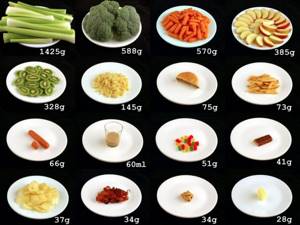
Negative calorie foods
Very often among people who are losing weight, you can hear about foods with a negative calorie content, for example, vegetables, which require more calories from the body than are contained in the product. In reality, everything is different.
In fact, there is really no such thing as negative calories. Any products contain proteins, fats, carbohydrates or organic acids. Vegetables and herbs, seasonings and some fruits are those ingredients whose energy value is equivalent to the body’s energy expended on their processing.
During digestion, the body spends a certain amount of energy for this work. It would be wrong to think that kilocalories from a previously eaten chocolate bar will be spent on processing, for example, grapefruit.
Proteins require the largest amount of energy expenditure of all macroelements. A 200-calorie chicken fillet eaten requires 140 kcal to process. Therefore, only 60 remain “free”. But this has nothing to do with fats and carbohydrates. For example, if you consume a spoonful of vegetable oil, it will be completely absorbed almost immediately, since the body will not need energy to process it. You can systematically eat fiber-rich foods that take a long time to digest in large quantities while losing weight and hope for a miracle, and then suffer from indigestion.
We can conclude: it is necessary to structure your diet so that it harmoniously combines all the nutrients necessary for normal human functioning.
Myths associated with counting calories
- The lower your daily caloric intake, the faster the weight will come off. This is true for the first days, when mostly water will go away. Further, your weight will either rise or become more, because the body will put aside reserve reserves of energy for its vital functions, since the amount of calories consumed is below the basic norm - a huge stress.
- When stopping weight, you need to constantly reduce calories. The body adapts to everything, including a constant lack of energy, so you should periodically change your caloric intake. But sometimes it’s worth forgetting about calories for a couple of days, eating whatever you want, and then returning to the norm where you stopped. These swings often help shift the weight.
- Calorie deficit as a lifestyle. This is fundamentally wrong. In order to avoid unpleasant consequences, every two months of deficiency you need to take a break of 2-4 weeks.
- With high daily activity, calorie counting is not necessary. Counting calories is not needed only if you can visually determine the number of calories in a serving and remember everything you eat. Very often people forget that while drinking coffee with a colleague, they ate a couple of cookies (200-250 kcal) or on the way to work they stopped at a fast food restaurant and drank only a cappuccino (100-150 kcal). Such little things can add up to a decent amount, and during an intense workout you burn an average of 500-700 kcal.
- Once you see the treasured number on the scale, forget about counting calories. You can forget about the deficit, but not about counting. But many people are beginning to determine the energy value of a dish by eye, which makes the calculation much easier; it is not necessary to constantly have scales and a calculator.
How to reduce calorie intake
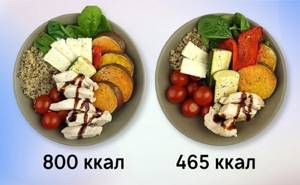
After calculating the daily calorie intake for weight loss, it seems that the diet will be tasteless and monotonous, but this is not so. There are many ways to reduce the calorie content of your meals.
- Cook mainly in the oven, steam or fry food without oil.
- Give up regular desserts in favor of low-calorie fitness sweets.
- Pay attention to product labels and choose low-calorie foods.
- Add more vegetables: they are low in calories and high in fiber.
- Replace high-calorie foods with low-calorie foods (sour cream/mayonnaise with yogurt, bread with crispbread, etc.).
- Try to cook yourself to monitor the quality of food and calculate calories for weight loss.
- Drink more water, tea, black coffee (without additives), avoid juices and carbonated drinks, as these are a large number of empty calories.
- Reduce portions.
- Give up sugar. If you absolutely cannot live without it, then use sweeteners, preferably natural ones, such as stevia.

From all the information provided, one conclusion can be drawn: you can lose weight by eating any food - be it a high-calorie dessert, a fatty burger or fresh vegetables - the main thing is not to exceed your daily calorie allowance. A severe underestimation of calories will first lead to rapid weight loss (mostly water will go away), and later everything will return in a larger volume, as the body will experience stress and begin to make reserve reserves, that is, put all the food eaten into fat. Proper weight loss is much more difficult than it seems; there are a lot of pitfalls in this matter, which can not only give absolutely different results than you expect, but also cause significant harm to your health.
Basic information about the calorie corridor
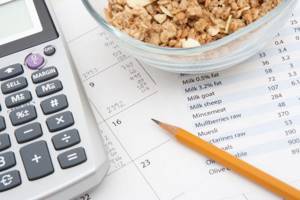
The calorie corridor represents the daily calorie intake with its lower and upper limits. This way you can maintain your weight, gain weight or lose it. In other words, if you want to lose weight, then you need to know by how many calories you should reduce your usual diet in order to correct your figure.
How to calculate the calorie corridor for weight loss? First of all, it is necessary to introduce basic concepts such as height, weight and age. Next, fill in the physical activity column in the calculator. The calorie corridor for weight loss involves using the lower limit of the daily food intake. It will be individual in each individual case. For some it may be 2000 calories, while for others 1200 calories will be enough.
However, it should be remembered that when losing weight, you cannot reduce your diet by less than 1000 calories.
Otherwise, the body will experience severe stress, the feeling of insatiable hunger will become a familiar state for you, and your metabolism will slow down, along with the process of burning fat. The body will perceive any incoming food as a source of perhaps its last energy. Therefore, it will automatically turn it into lipid deposits “in reserve.” We see that excessive calorie reduction has a bad effect not only on a person’s well-being, but also on the achievement of his goal, because it becomes further and further, despite all the efforts made.
General tips for losing weight:
- Use a food diary. It should record everything eaten during the day, and you need to record the dish itself, its size, and composition. This way you can accurately calculate the number of calories you consumed. A diary does not have to be a notebook. Today, many calorie counting apps have been developed for smartphones, which simplifies the process of keeping a diary and reduces the time spent counting calories.
- Keep an eye on the ratio of BZHU. A normal diet includes about 20% protein of the daily diet, 25-30% fat and the remainder is carbohydrates. However, if you want to use the calorie corridor calculator as efficiently as possible, then you should slightly shift the BJU ratio in favor of proteins, reducing the consumption of carbohydrates.
- Plan your meals. Knowing the exact number of calories per day, you can carefully think through and create a diet. It is recommended to divide the daily food intake into 4-5 meals. This will prevent you from feeling hungry. At the same time, the portions are reduced accordingly, which will further help reduce the volume of the stomach. You will eat less food, which will help maintain your weight loss results.
- The calorie range calculator allows you to eat everything; the main criterion is the total amount of energy consumed in food. However, over time, you will realize that it is better to spend 300 calories on a full meal, which will keep you full for a long time, than on a small chocolate bar, which will satisfy your need for only half an hour. The calorie calculator instills proper nutrition culture.
- While following the instructions of the calorie calculator, do not forget about the drinking regime. You still need to drink at least 1.5 liters per day.
Be sure to read: Features of using dried fruits for weight loss






